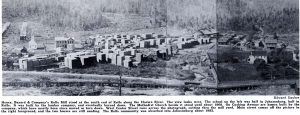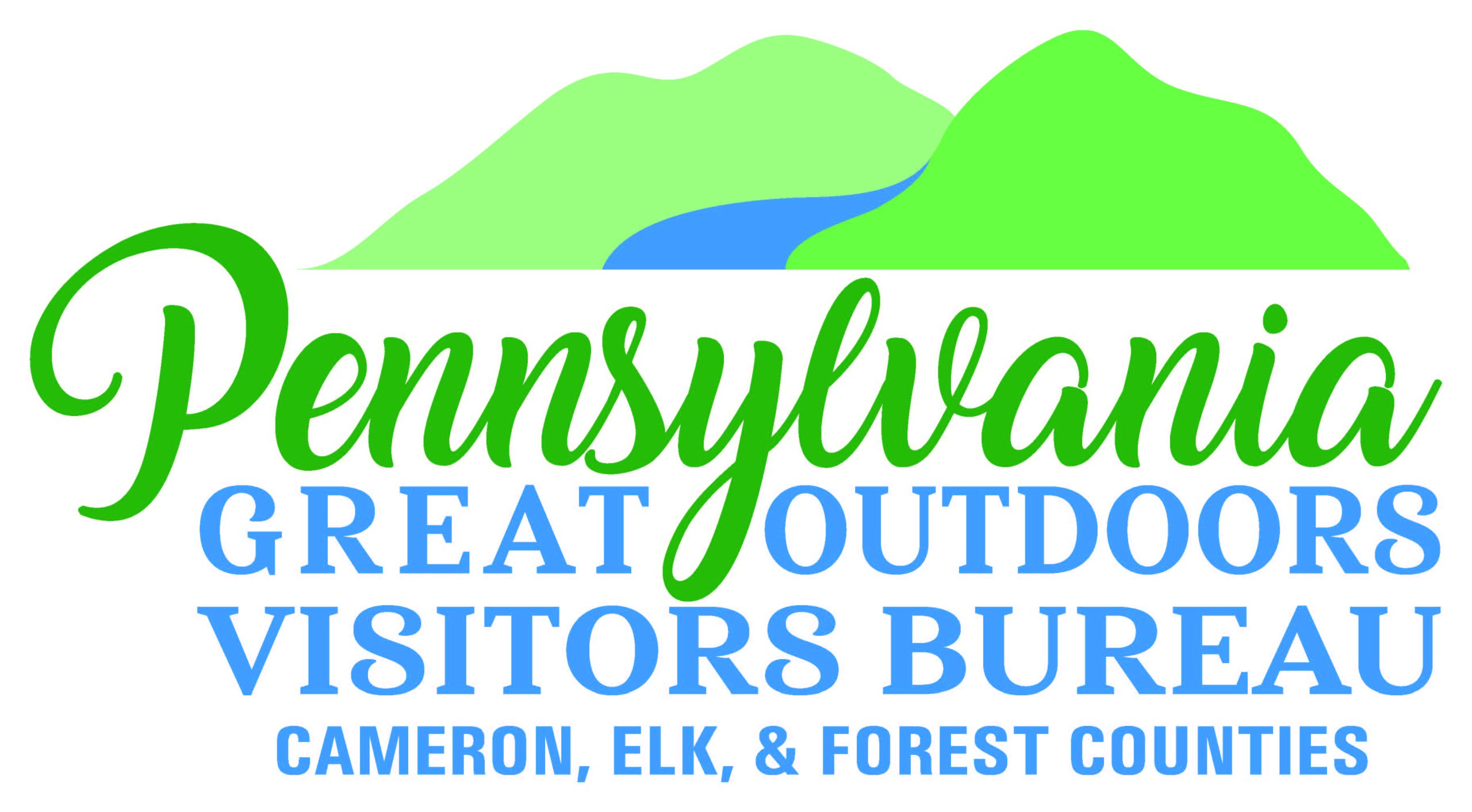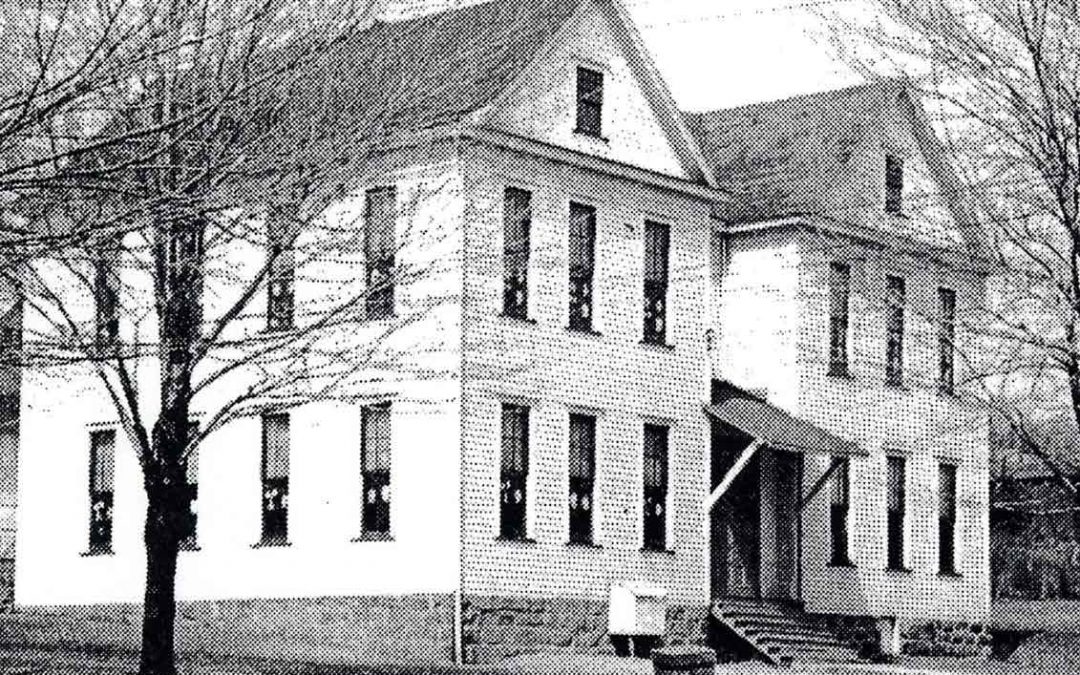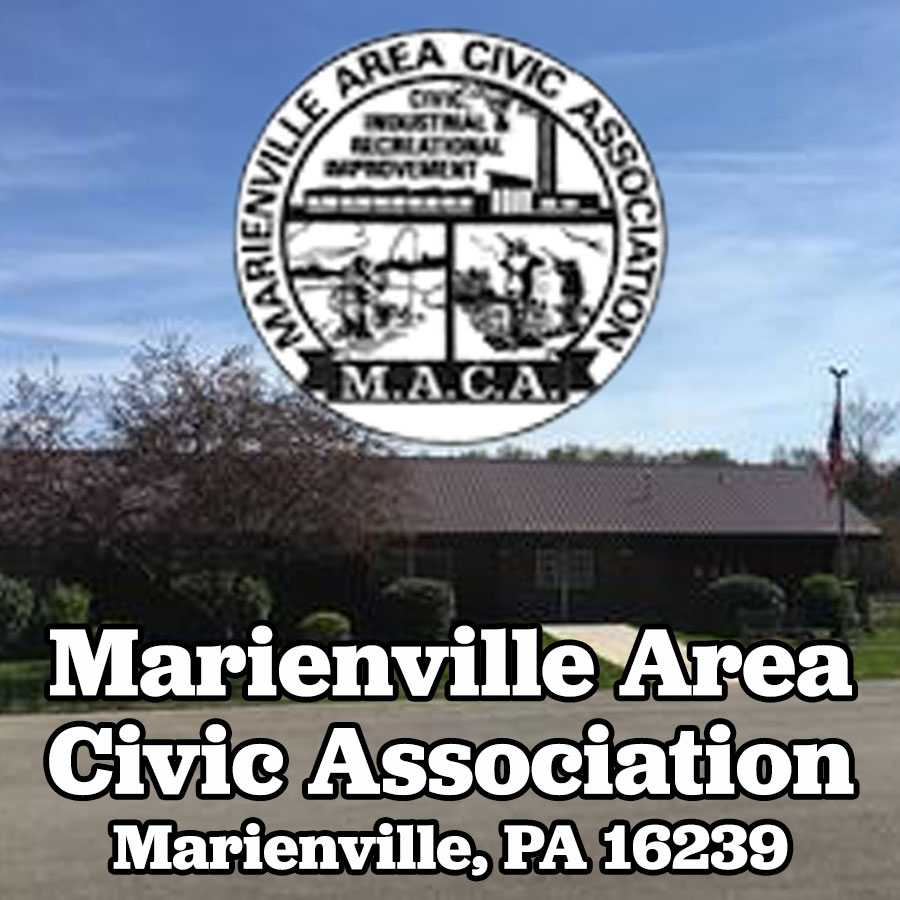Article and Photos supplied by Bob Imhof
Part 1 – The Henry, Bayard Company
The Henry, Bayard Company of Philadelphia were wholesale lumber dealers and owners of vast tracts of timber the in Elk and McKean Counties and builders of the Johnsonburg and Clermont Railroad encompassing some twenty miles of tracks.
One of the major mills of Henry, Bayard and Company and the one to operate the longest was the Rolfe mill. The date of construction was sometime between 1880 and 1885, with the year of 1880 being the most likely. It was managed by William Devine, and often referred to as Devine’s mill. WILLIAM L. DEVINE, Rolfe, superintendent for Henry, Bayard & Company., lumbermen, was born in the town of Liberty, Sullivan Co., N. Y. same community as Oscar B. Grant of Ridgway on September 24, 1852, and was a son of George and Catherine (Travis) Devine, both natives of the county named above. His father was a millwright by trade, but principally followed farming as a vocation. Mr. Devine was also a millwright by  trade. In 1869 he moved to Williamsport, Pennsylvania., remained there several years, and in 1882 came to Rolfe, Elk County where he has ever since held his present position. Mr. Devine was superintendent of mills for the late W. W. Gilman, then of No. 10 Ferry Street, New York City) and Clara J. (born in Rolfe, Penn., November 6, 1885). Mr. and Mrs. Devine also adopted, in their early marriage days, a little girl, Mamie E. Fahrenkrug, a young lady and member of the family. Mr. Devine was a member of Ridgway Lodge, No. 369, F. & A. M., and of the lodge of the I. O. O. F. at Ridgway. He belonged to no church, although he liberally contributes toward the spread of the gospel and the support of the church generally, as is evidenced by the bell that hangs in the belfry of the Methodist Episcopal Church edifice at Rolfe, which was placed there through his generosity; the beautiful new school building, comprising four rooms, was also erected through his untiring zeal and energy, at a cost of $2,500. This school was taught by three instructors, viz.: W. F. McCloskey, of Caledonia, Pennsylvania., principal; Miss Kate 0’Conner, of Ridgway, in the intermediate department, and Miss Mame Schoening, also of Ridgway, in the primary department. These departments made use of three rooms, since they were overcrowded with pupils, the fourth room was called into requisition within a year. In politics Mr. Devine was a Republican; he has served as school director of Ridgway township, and beginning in 1884 was postmaster at Rolfe. Mrs. Devine and children were members of the Methodist Episcopal Church.
trade. In 1869 he moved to Williamsport, Pennsylvania., remained there several years, and in 1882 came to Rolfe, Elk County where he has ever since held his present position. Mr. Devine was superintendent of mills for the late W. W. Gilman, then of No. 10 Ferry Street, New York City) and Clara J. (born in Rolfe, Penn., November 6, 1885). Mr. and Mrs. Devine also adopted, in their early marriage days, a little girl, Mamie E. Fahrenkrug, a young lady and member of the family. Mr. Devine was a member of Ridgway Lodge, No. 369, F. & A. M., and of the lodge of the I. O. O. F. at Ridgway. He belonged to no church, although he liberally contributes toward the spread of the gospel and the support of the church generally, as is evidenced by the bell that hangs in the belfry of the Methodist Episcopal Church edifice at Rolfe, which was placed there through his generosity; the beautiful new school building, comprising four rooms, was also erected through his untiring zeal and energy, at a cost of $2,500. This school was taught by three instructors, viz.: W. F. McCloskey, of Caledonia, Pennsylvania., principal; Miss Kate 0’Conner, of Ridgway, in the intermediate department, and Miss Mame Schoening, also of Ridgway, in the primary department. These departments made use of three rooms, since they were overcrowded with pupils, the fourth room was called into requisition within a year. In politics Mr. Devine was a Republican; he has served as school director of Ridgway township, and beginning in 1884 was postmaster at Rolfe. Mrs. Devine and children were members of the Methodist Episcopal Church.
The timber land located west of Rolfe, to be cut at this mill totaled about 17,000 acres. It had been bought by Maurice M. Schultz, owner of the Wilcox Tannery and until 1891 Henry, Bayard and Company cut it under contract. In February all the timber on these warrants was sold to the Henrys, who agreed to sell the hemlock bark back to Schultz.
Initially the Rolfe mill of the Henry, Bayard Company received logs floated down the West Branch of the Clarion. They may also have been splashed down Silver Creek a few miles or brought in by log slides. In 1897 sawmill activities at Whistletown on the Clarion River between Ridgway and Johnsonburg ended. Wilcox had  closed several years previously. In order to continue receiving an adequate supply of lumber, Henry, Bayard and Company instructed Superintendent Devine to increase the output of his mill. It was rebuilt with a band saw. The output was more than doubled to 125,000 feet. The increase necessitated more log trains, and two Shay locomotives were acquired — one from John Ernhout, No. 332, and the other purchased new, No. 536.
closed several years previously. In order to continue receiving an adequate supply of lumber, Henry, Bayard and Company instructed Superintendent Devine to increase the output of his mill. It was rebuilt with a band saw. The output was more than doubled to 125,000 feet. The increase necessitated more log trains, and two Shay locomotives were acquired — one from John Ernhout, No. 332, and the other purchased new, No. 536.
Part 2 – The Rolfe and Northern Railroad and Associated Lines
It was not until 1885 that a railroad was considered, at which time the Rolfe and Forest City Railroad was built along Silver Creek to a place called Highland. not the town of Highland but a place on the ridge above Silver Creek I located during my field studies. A Porter 0-4-2 locomotive was purchased in October.
Trouble struck the railroad even before it opened. Heavy rain late in August 1885 washed out some of the new track. Later, in July 1889 “Owing to a misunderstanding between Mr. Schultz and the Henry, Bayard Company, the tracks of the Forest City Railroad were torn up by Mr. Schultz’s men, in consequence the mill was shut down.” The track was replaced almost as quickly as it was torn up after Superintendent Devine heard about it.
The railroad was renamed the Rolfe and Northern and incorporated on July 17, 1889. John J. Henry owned1,000 shares of stock, Charles W. Henry, 500 shares, James Bayard, 450 shares and J. Henry Bayard 30 shares. The railroad continued to be listed in Poor’s Manual under its former unincorporated name of Rolfe and Forest City Railroad.
As nearby timber was cut, track was extended into Little Mill Creek. Bringing loaded log cars to the mill was no longer just a downhill ride, and the Porter saddle tanker was inadequate for dragging many loaded cars upgrade. A twenty-two-ton Climax locomotive No. 69 was purchased in February 1890. It was the biggest locomotive which the Climax company had built to that date. Production at the mill increased. March 1891 saw a record 1,400,000 feet produced. Part of this came in by rail but in the springtime, logs were floated in from along the Clarion River up to Wilcox. Hemlock too small for lumber was delivered to the new Johnsonburg paper mill. The Rolfe Railroad was extended to its western limits along Big Mill Creek. Track had been gradually laid up Little Mill Creek and Pine Camp Run and then down the mountain to Big Mill Creek. Bringing trains up that mountain called for larger locomotives than those previously owned, the thirty-five-ton No. 536 was the answer.
The railroad found special use at night getting honey. One of the old timers related that his father and a group of men would take the Porter locomotive and a log car to which some planks had been laid for the men to ride on. Having located honey trees in the daytime, they went out at night and cut them down, chopped out the honey and returned to the mill.
The railroad crossed Big Mill Creek at Pine Run where the McChesney lumber camp was located and proceeded up Pine Run about two miles. Interesting fact of this grade was part was literally built in the stream as it headed up the valley. Apparently, our hard-working ancestors were not concerned about replacing sections of that grade if a high-water event did happen.
Early in 1899 the Rolfe mill burned and with five years of timber remaining to be cut a new band sawmill was erected. Lumbering at Rolfe continued until late in January of 1904 when the mill closed. Henry, Bayard and Company would look elsewhere for lumber outside of Elk County. Instanter had closed in 1902 and their only remaining operation was at Straight where the Quinn’s had only a few years of timber left to cut. The Rolfe and Northern Railroad, equipment and lands were sold to the New York and Pennsylvania Company to bring the paper wood to the mill in Johnsonburg, thus began the second history of the Rolfe & Northern Railroad.
The Rolfe operation was the largest, but before chronicling its history, mention of several other miscellaneous tracts will be made. On Indian Run, two miles north of Johnsonburg, George Bowley had the jobbing contract. The wood was brought down to the Pennsylvania Railroad and reloaded onto standard gauge cars for the two-mile trip to the mill. By the end of 1910 the tract was stripped. Later, Bowley cut paper wood for New York. and Pennsylvania. at Burning Well, and in 1913 he moved over to Bear Creek.
Another area the paper company cut was on Wolf Run. They used the Dahoga and Highland Railroad of the McKean Chemical Company to take out their wood. The Birch Hollow tract was purchased January 6, 1905 from the Central Pennsylvania Lumber Company and the railroad equipment from E. M. Campbell, who had the contract for cutting the saw timber. Along with six miles of track squirming thru the warrant came a thirty-ton Climax locomotive, No. 252. Pulp wood was taken out for several years, and then the track was removed. The sawmill of Campbell was used to cut larger logs for the paper company. It cut 60,000 feet daily, and operated several years. Then a mill was built at Rolfe. The Wilcox Railroad and warrants 2674, 2684, and 2685 were purchased December 3, 1904 from the Wilcox Manufacturing Company. One locomotive and 10.5 miles of railroad were included. The railroad ran to Burning Well where one branch went up Buck Run and another up Lanigan Run. These were standard gauge. A narrow-gauge line climbed out of Lanigan Run to the top of the mountain via two switchbacks and headed toward Lantz’s Corner. Later additional acreage was purchased. For several years a sawmill was operated at Wilcox with A. N. Holquist as the manager for the paper company.
The Wilcox Railroad was left in place until 1921 or 1922, and a locomotive was left there until the middle 1930s. Likely, the tract was not continuously being cut — it wasn’t that big. The log train, when it was operated, was run by Joe Bowley. At time of acquisition by the paper mill, only eight cars of pulp wood were needed daily. These cars could come from the Wilcox, Rolfe, or Birch Hollow tracts. However, as the paper mill was enlarged, more cars were needed each day. Surprisingly, the narrow-gauge portion was never widened. Wood was brought down to Lanigan Run and transferred onto Pennsylvania freight cars for the trip to Johnsonburg. At other points along the standard gauge log lines, the wood was loaded directly into Pennsylvania Railroad cars.
The Rolfe Railroad, renamed the West Branch Railroad, was the major operation of the paper company. At the time of purchase in 1904 the western portion of the railroad had been torn up back to Silver Creek Summit (Highland) between warrants 3233 and 3237, four miles from the paper mill. There was also a branch leading back on Johnson Run and Riley Run towards the mill, the purchase included several miles of rails in storage along with two locomotives, twenty-five log cars and a tank car for firefighting. The whole thing cost $23,000.
During 1904 the railroad was re-laid to Little Mill Creek and over to Block House, 2 miles. In 1905 the track was re-laid to Big Mill Creek. Other changes were made. The Johnson Run branch had gradually been extended until it connected with the Buffalo, Rochester, and Pittsburgh Railroad near Johnsonburg. By building an additional .8-mile connection, the line ran into the mill. At the head of Johnson Run a one-mile extension was built straight west to Little Mill Creek. Then the original five miles of the Rolfe Railroad up Silver Creek were torn up. The new railroad line was two miles shorter than the old.
The paper company had extensive lands along Big Mill Creek, some of which extended over to Bear Creek. The original railroad had come down Big Mill Creek as far as Rocky Run. The new line followed the old but extended further. It crossed the creek and went up Red Mill Run to its headwaters, then crossed northwesterly over the divide and dropped down into Bear Creek to reach pulp wood on warrants 1776, 1758 and 1858. The new railroad was also extended north along Big Mill Creek to Cherry Mill Run. The company owned all the land west of Big Mill Creek and spurs were built up each run between Cherry Mill and Red Run.
The Ellithorpe branch now part of the Brush Hollow Cross-Country Ski Trail is the best remembered. It was the longest and the last to be cut before all cutting in Elk County was completed. From its headwaters to the mill was about eighteen miles and included two switchbacks climbing out of the Big Mill Creek Valley.
The long haul caused the operation of the railroad to be divided. One train ran from the mill to Forest City; another train worked from the timber and up the switchbacks. Albert Peterson ran the woods train; Ed Dauber ran the old Birch Hollow Climax bringing the trains into the mill. The last of the paper wood on Ellithorpe was cut in 1924 or early ’25. The West Branch Railroad was then abandoned, and soon after four of the five locomotives were disposed. Only No. 12 was kept switching the many incoming standard gauge cars of spruce arriving from Canada. The other four locomotives were “Old Rosie” a former New York elevated locomotive once used a North Bend, Clinton County and later used as a mill switcher; a rod locomotive called “Scootac”, probably because it came from the Scootac Railroad near Lock Haven; Maggie”, the Climax No. 252; and a no longer remembered locomotive. Five other locomotives had previously been disposed including the two Climax “A” engines and several old Shays, one of which went to Willsboro, New York.
There was no longer any use for the Big Mill Creek tract. Its 8077 acres were sold to the United States Government in December 1925 for $3.50 an acre to form part of the Allegheny National Forest.
NEW YORK AND PENNSYLVANIA COMPANY
Rolfe and Johnsonburg
Pennsylvania has never had many paper mills, and only the New York and Company operated in Elk and McKean Counties to serve the Johnsonburg mill. New York and Pennsylvania Company also operated a logging railroad at their Willsboro, New York pulp mill. This mill was small, making 75 tons of paper pulp daily. It operated until 1962 when sold to Vanity Fair Paper Company who soon after sold out to Georgia Pacific. They closed the plant in 1967.
During the ’90s Henry, Bayard and Company supplied the pulp wood logs as part of their Rolfe sawmill operation. Whenever land came available, it was purchased by Mr. Armstrong and A. G. Paine. Mr. Paine was from the Hanover Trust Company in New York and supplied the money necessary for expansion. Mr. Armstrong remained very active until his death at which time Mr. Paine took over.
About 1899 a process was developed to use hardwood in paper making. The hardwood was blended with the conifers. This created tremendous possibilities for re-cutting areas where small hardwood remained. When it was full developed, it became more profitable for the Wilcox Manufacturing Company to sell their lands to the paper company. This was done in December 1904. The use of hardwood also forced the company into the railroad business. In January 1904 Henry, Bayard and Company closed their Rolfe mill. No longer had they any need for their railroad. Small hardwood and conifers remained throughout most of their acreage which extended to Big Mill Creek. The land was sold to the paper company as was the Rolfe Railroad on April 20, 1904. Half a year later they added the Wilcox tract and its railroad; and in 1905 warrant 4861, southeast of Johnsonburg up Birch Hollow, was acquired.

















